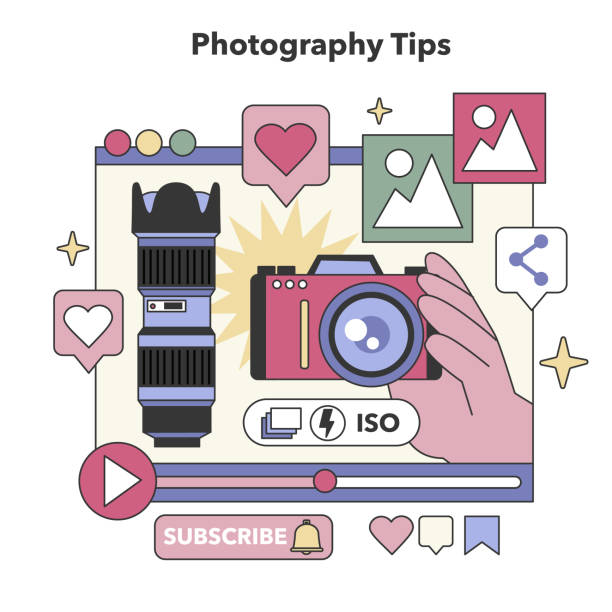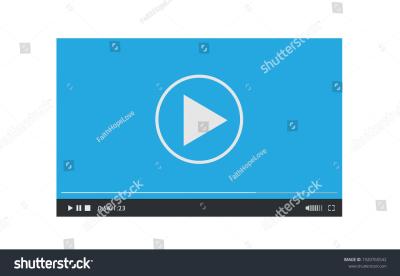If you’re diving into the world of visual content, Shutterstock is probably on your radar. It’s one of the biggest stock photo platforms out there, offering millions of images, videos, and music tracks that can elevate your projects, whether you’re a blogger, marketer, or small business owner. But what makes Shutterstock stand out? Well, its vast library, high-quality assets, and user-friendly interface make it a go-to resource for both beginners and pros. Plus, it offers flexible licensing options, so you can find the perfect fit for your needs without hassle. Ready to explore how
Creating a Shutterstock Account and Navigating the Platform

Getting started with Shutterstock is simple and straightforward. First, head over to their website and click on the “Sign Up” button. You’ll be prompted to enter your email address, create a password, and choose your account type—whether you’re an individual, a business, or a contributor. For most beginners, an individual account works perfectly and gives you access to browse, download, and purchase assets.
Once you’ve signed up, take a moment to customize your profile. Upload a profile picture, add your name, and set your preferences to tailor your experience. Now, onto navigation—Shutterstock’s platform is designed to be intuitive. The homepage features a search bar at the top, where you can type in keywords related to what you’re looking for. Below that, you’ll see collections, trending images, and recommended content based on your activity.
To make your browsing easier, use the filters on the left side of the search results. You can filter by:
- Media type (photos, videos, vectors, music)
- Orientation (horizontal, vertical, square)
- Color scheme
- Image size and resolution
- License type (standard or enhanced)
Saving your favorite assets is simple—just click the heart icon on any image or video, and it will be added to your favorites for quick access later. If you find yourself downloading frequently, consider subscribing to a plan or purchasing credits. These options can save you money and streamline your workflow.
Remember, exploring the platform is part of the fun. Play around with search terms, browse categories like Business, Nature, or Technology, and see what kind of visual treasures you can discover. With a little practice, navigating Shutterstock will become second nature, making your content creation process smoother and more enjoyable!
Searching for Images, Videos, and Music on Shutterstock
Now that you’re ready to find the perfect content for your project, let’s dive into how to effectively search for images, videos, and music on Shutterstock. Think of Shutterstock’s search function as your personal treasure map—once you know how to navigate it, you’ll discover exactly what you need in no time!
First thing’s first: start with clear keywords. Be specific! Instead of just typing “dog,” try “golden retriever puppy playing” or “dog running in park.” The more precise your keywords, the better your search results will match your needs.
Shutterstock offers various filters to narrow down your search. Here are some handy options:
- Media Type: Choose between Images, Videos, or Music depending on what you’re after.
- Orientation: Select Horizontal, Vertical, or Square images for better framing.
- Color: Filter by specific colors if your project has a color scheme.
- Size & Resolution: For high-quality prints, opt for larger resolutions.
- People & Portraits: Filter for images with or without people.
- Duration & Frame Rate: For videos, specify length or frame rate to match your project.
Another tip: use the search suggestions that appear as you type. Shutterstock often recommends related keywords or popular searches that can inspire your search or help you discover new content.
When browsing through results, pay attention to the thumbnails and preview images. Hover over images to see quick previews or click to view larger versions. For videos, preview clips can help you assess motion and quality before downloading.
Finally, use the “Favorites” feature to save promising images or clips. This way, you can easily compare options later or compile a mood board for your project.
Remember, the key to efficient searching is experimentation. Don’t hesitate to try different keywords, filters, or combinations. The more you explore, the more likely you’ll find exactly what you need to bring your creative vision to life!
Understanding Licensing Options and Usage Rights
Before you start downloading and using content from Shutterstock, it’s crucial to understand the licensing options and what rights you have. This might sound a bit technical at first, but don’t worry—once you get the hang of it, it becomes second nature and helps you avoid potential legal hiccups.
Shutterstock primarily offers two types of licenses:
| Standard License | Enhanced License |
|---|---|
|
|
So, what does this mean in practical terms? If you’re creating a blog post, social media graphic, or a presentation, the Standard License is usually sufficient. But if you plan to put a design on a T-shirt, sell prints, or use it in a commercial product, you’ll want the Enhanced License.
Always remember to check the license agreement for each asset you plan to use. Some important points include:
- Usage limits: How many copies or impressions are allowed?
- Distribution: Will this be used online, in print, or on physical products?
- Resale: Is the content intended for products for resale? (Requires an enhanced license)
- Restrictions: Are there any limitations on the nature of the use (e.g., sensitive subjects, identifiable people)?
If you’re ever unsure, Shutterstock’s licensing info is detailed and helpful, or you can reach out to their support team for clarification. The goal is to ensure you’re using content legally and ethically while making your project shine.
In summary, understanding the licensing options empowers you to use Shutterstock content confidently, knowing you’re respecting creators’ rights and staying within legal boundaries. It’s a small step that makes a big difference in maintaining professionalism and avoiding headaches down the line.
Downloading and Managing Your Shutterstock Assets
Once you’ve found the perfect images, videos, or vectors on Shutterstock, the next step is downloading and managing those assets efficiently. It might seem straightforward, but having a good system in place can save you a lot of time and headaches down the line.
First things first, after selecting your assets, you’ll want to add them to your download queue. Shutterstock makes this easy—just click the download button, and your assets will be stored in your account until you’re ready to save them to your device. Remember, if you’ve purchased a subscription or credit package, each download deducts from your available credits or monthly allotment.
When it comes to managing your assets, organization is key. Here are some tips to keep everything tidy:
- Create folders or collections: Shutterstock allows you to organize assets into collections. Use this feature to categorize images by project, theme, or client.
- Rename files: Before downloading, consider renaming files with descriptive titles. This makes searching easier later on.
- Use tags and keywords: Add relevant keywords to your saved assets. This way, when you need a specific type of image, a quick search will bring up your curated collection.
- Keep track of licenses: Remember which assets are licensed for commercial use versus personal projects. Shutterstock provides license details, so review them to avoid any legal hiccups.
Another handy tip is to back up your downloaded assets externally. While Shutterstock keeps your files safe on their platform, having copies on your local drive, cloud storage, or external hard drive can be a lifesaver if you lose access to your account or need to work offline.
Finally, regularly review your collection. Delete duplicates or assets you no longer need, and update your folders to reflect your current projects. Staying organized will make your workflow smoother and help you find the perfect asset faster next time!
Tips for Finding High-Quality Content Quickly
Let’s face it—time is precious, especially when you’re working on tight deadlines. Finding high-quality content quickly on Shutterstock can make all the difference. Here are some practical tips to speed up your search process and ensure you’re getting the best assets:
1. Use Filters Wisely
Shutterstock offers a range of filters to narrow down your search results. You can filter by:
- Image type – Photos, vectors, illustrations, videos
- Orientation – Horizontal, vertical, square
- Color – Dominant colors to match your palette
- Price – Free, subscription, or on-demand content
- License type – Editorial, commercial
Using filters efficiently helps you skip irrelevant results and find what you need in fewer clicks.
2. Save and Use Search Presets
If you often search for similar assets, utilize the search presets feature. Save your favorite filter combinations so you can quickly apply them during future searches, saving precious time.
3. Leverage the Search Bar’s Advanced Features
Type specific keywords or phrases, and use quotes for exact matches. For example, searching for “business meeting” will give you results containing that exact phrase, reducing random, unrelated images.
4. Explore Curated Collections and Featured Content
Shutterstock often highlights trending, seasonal, or curated collections. Browsing these can quickly lead you to high-quality assets that are popular and well-crafted, perfect for professional projects.
5. Use Keywords Strategically
Think about the most relevant and specific keywords for your project. Be descriptive—use terms like “sunset over mountains” instead of just “nature.” The more precise your keywords, the faster you’ll find suitable content.
6. Preview Before Download
Always preview images or videos in full resolution and check licensing details before downloading. This prevents wasting time on assets that don’t meet your quality standards or usage needs.
By mastering these tips, you’ll become much more efficient at finding high-quality Shutterstock content, leaving you more time to focus on creating amazing projects. Remember, a little organization and strategic searching go a long way in making your workflow smooth and enjoyable!
Conclusion and Next Steps for New Shutterstock Users
As a new user of Shutterstock, you’ve taken the first step toward accessing a vast library of high-quality images, videos, and music for your creative projects. Remember, mastering the platform can significantly enhance the professionalism and impact of your content. To make the most of Shutterstock, consider exploring the following next steps:
- Familiarize Yourself with Licensing Options: Understand the differences between Standard and Enhanced licenses to ensure compliance and optimal usage for your projects.
- Utilize Search Filters: Use advanced filters such as orientation, color, and image type to quickly find the most relevant assets.
- Create Collections: Save your favorite assets into collections for easy access and organization, streamlining your workflow.
- Download and Credit Properly: Always adhere to licensing terms and provide proper attribution when required to avoid copyright issues.
- Explore Contributor Resources: If you’re interested in contributing, review Shutterstock’s contributor guidelines to start submitting your own content.
In addition, consider subscribing to Shutterstock’s newsletters or following their tutorials to stay updated on new features and best practices. Practice regularly to build your familiarity with the platform’s features, and don’t hesitate to utilize their customer support for assistance. By taking these proactive steps, you’ll become a more efficient and effective Shutterstock user, empowering your creative projects and elevating your overall content quality.
Embark on your Shutterstock journey with confidence, and unlock the full potential of this powerful platform to bring your ideas to life.


